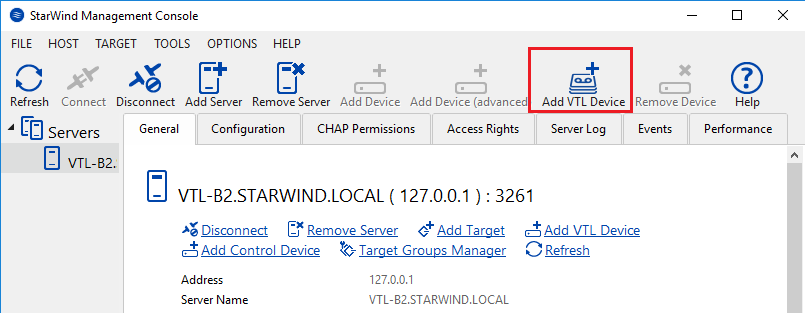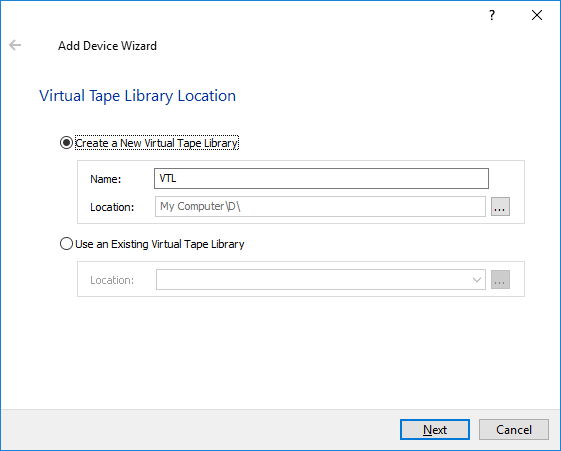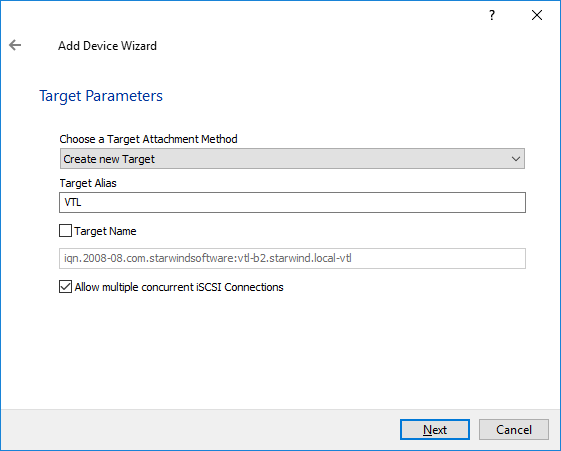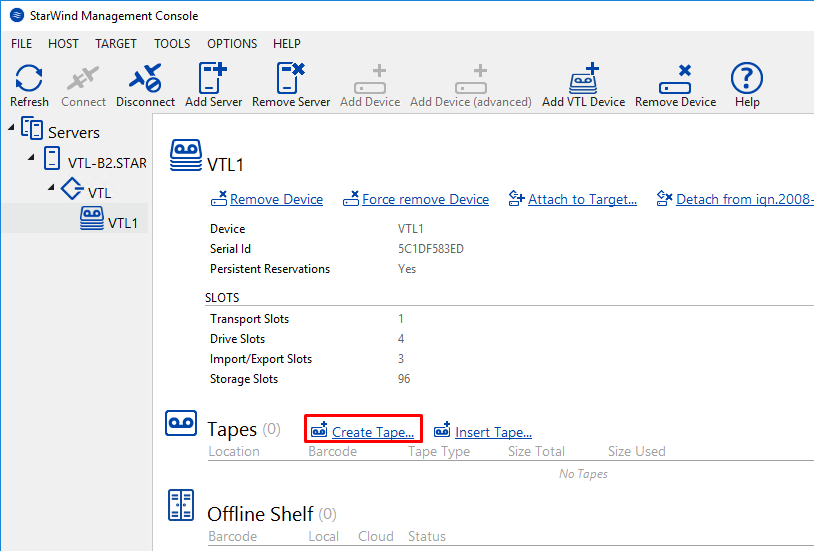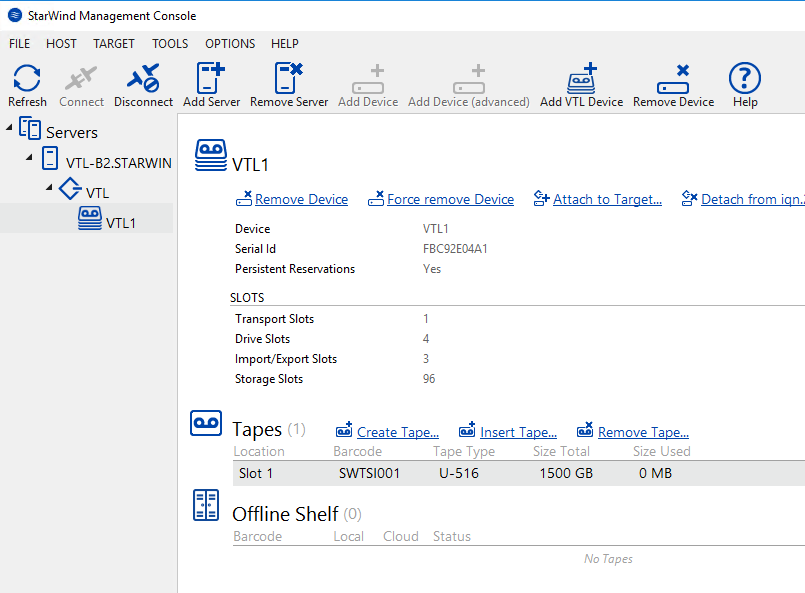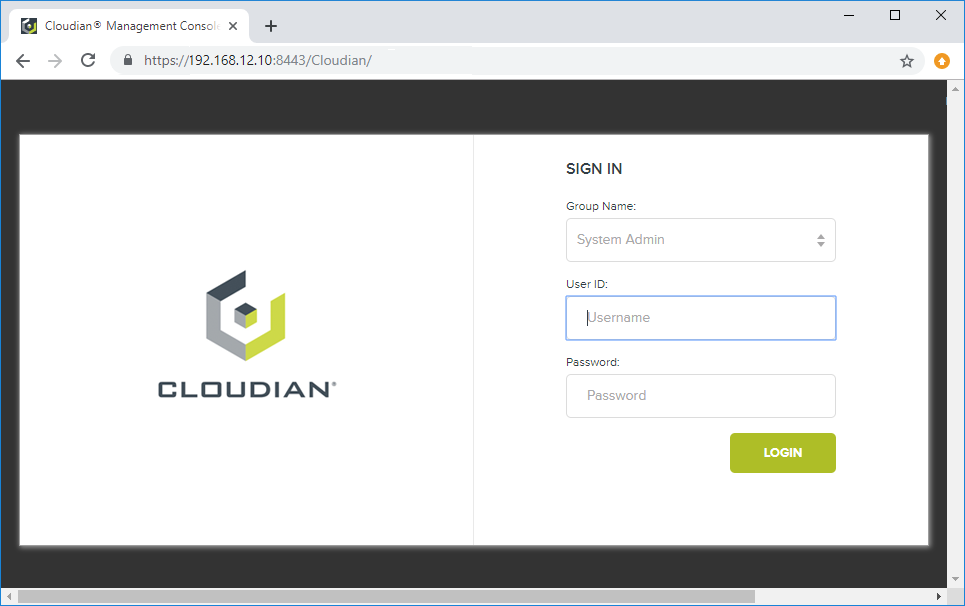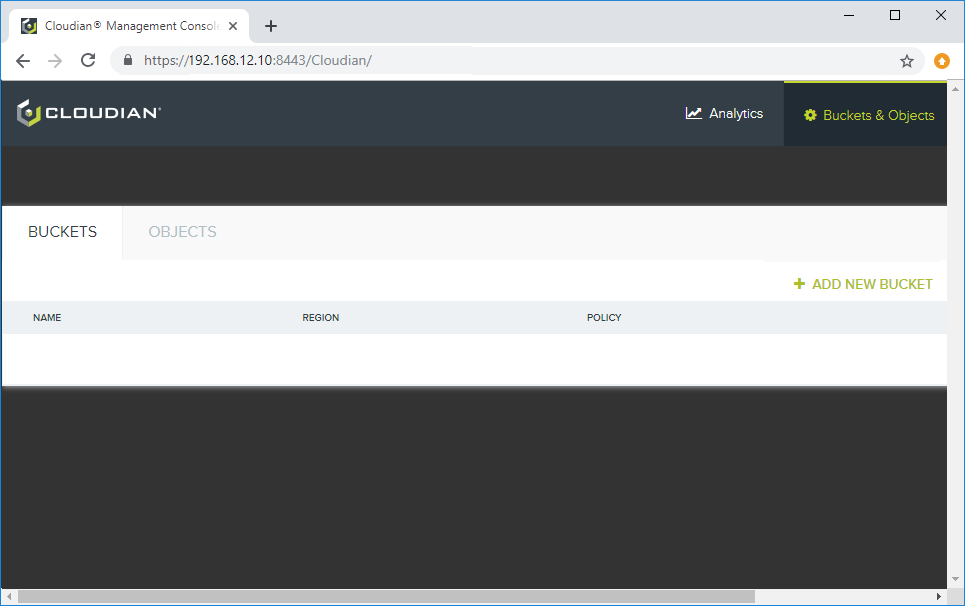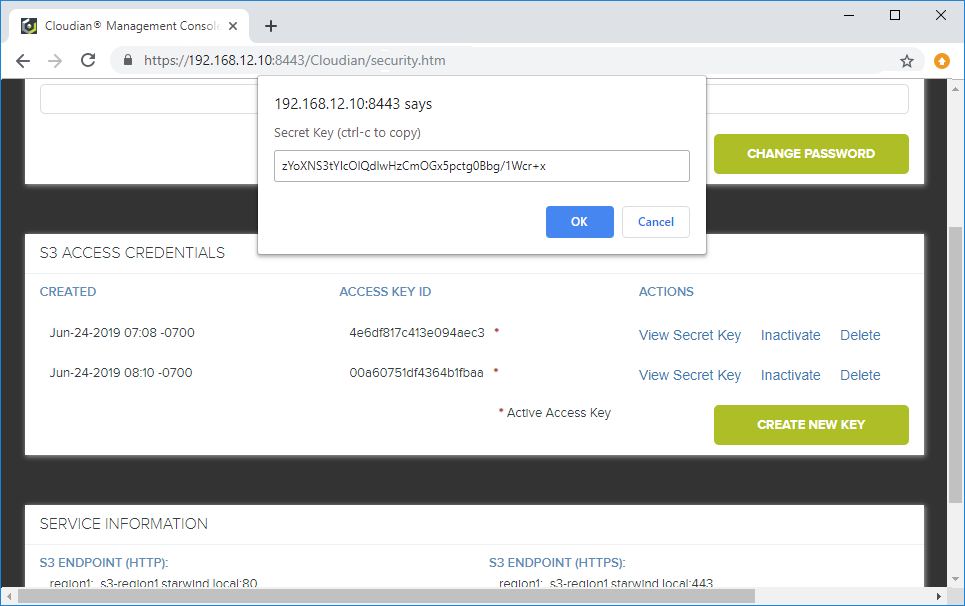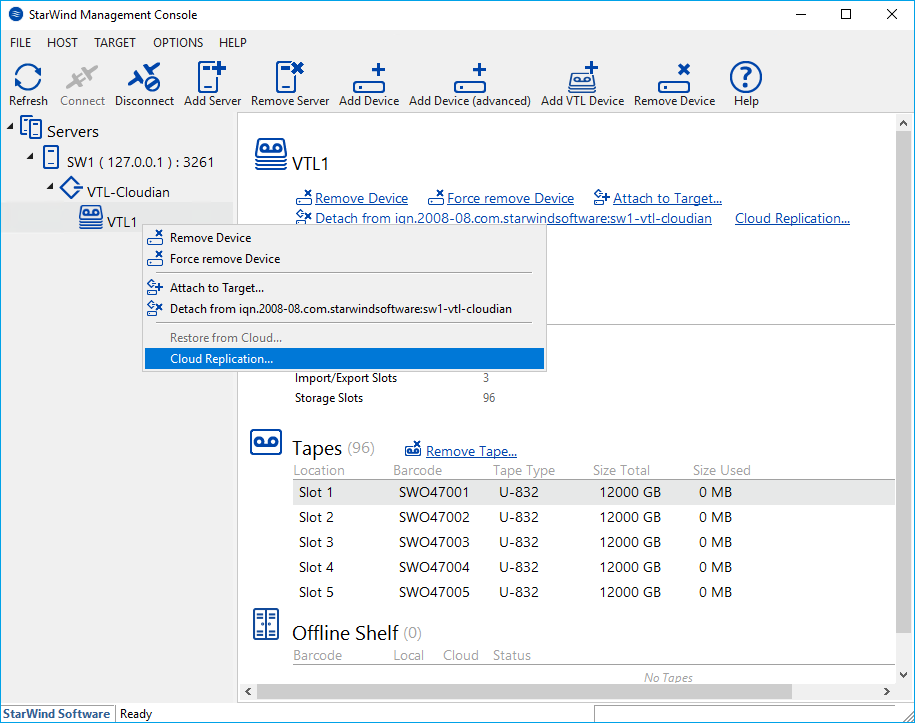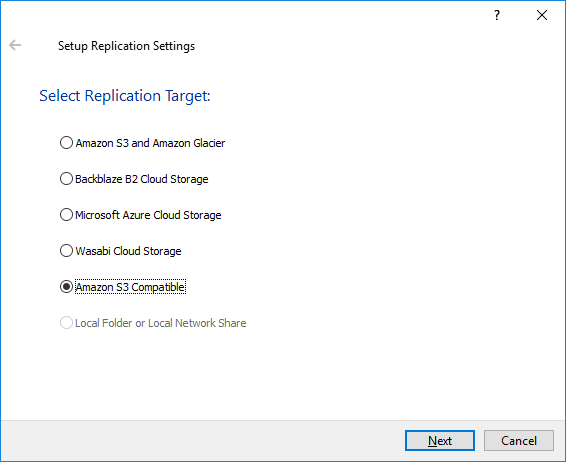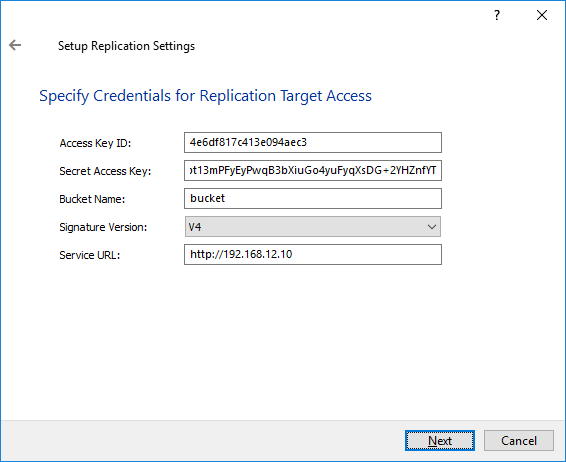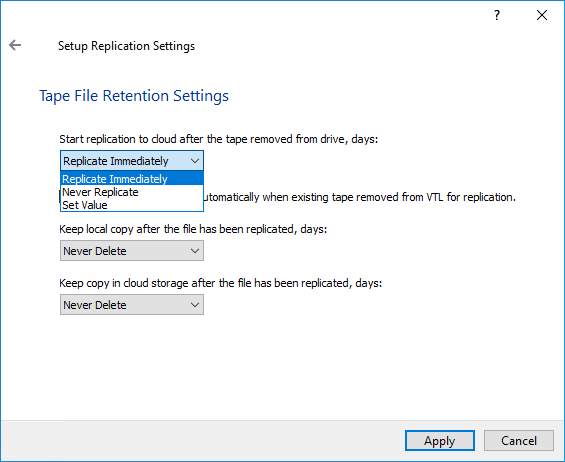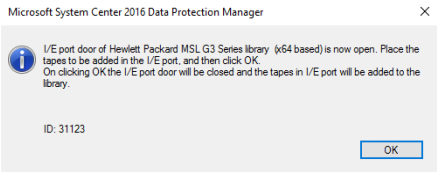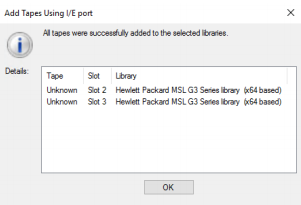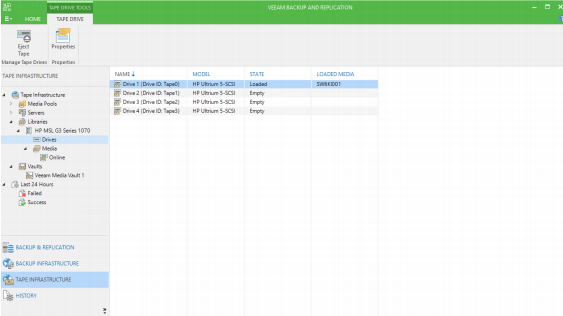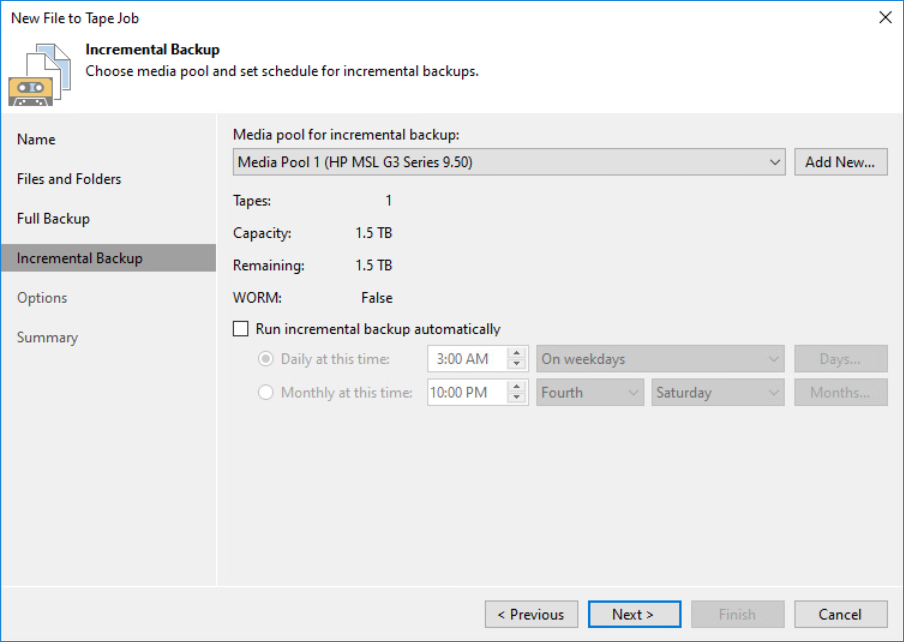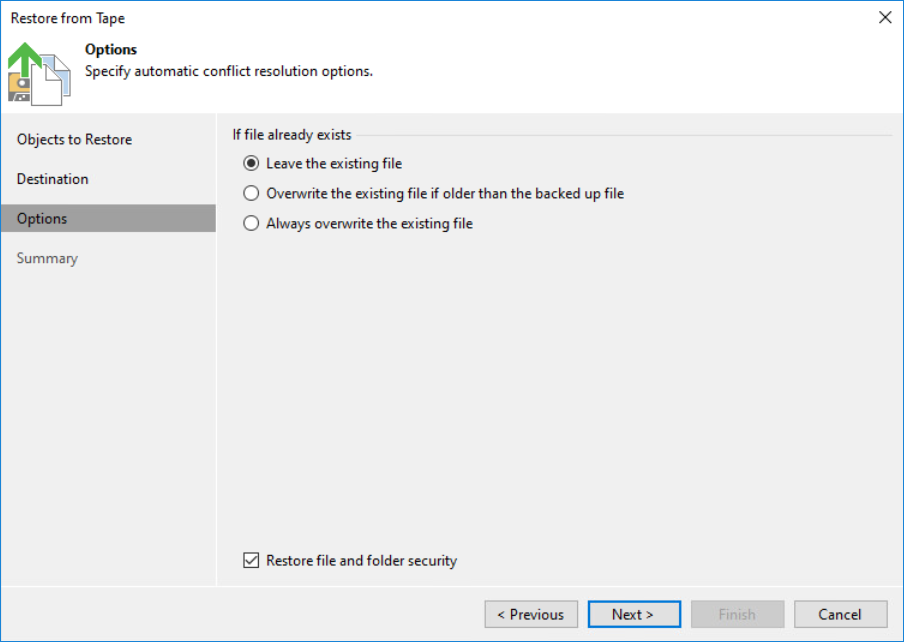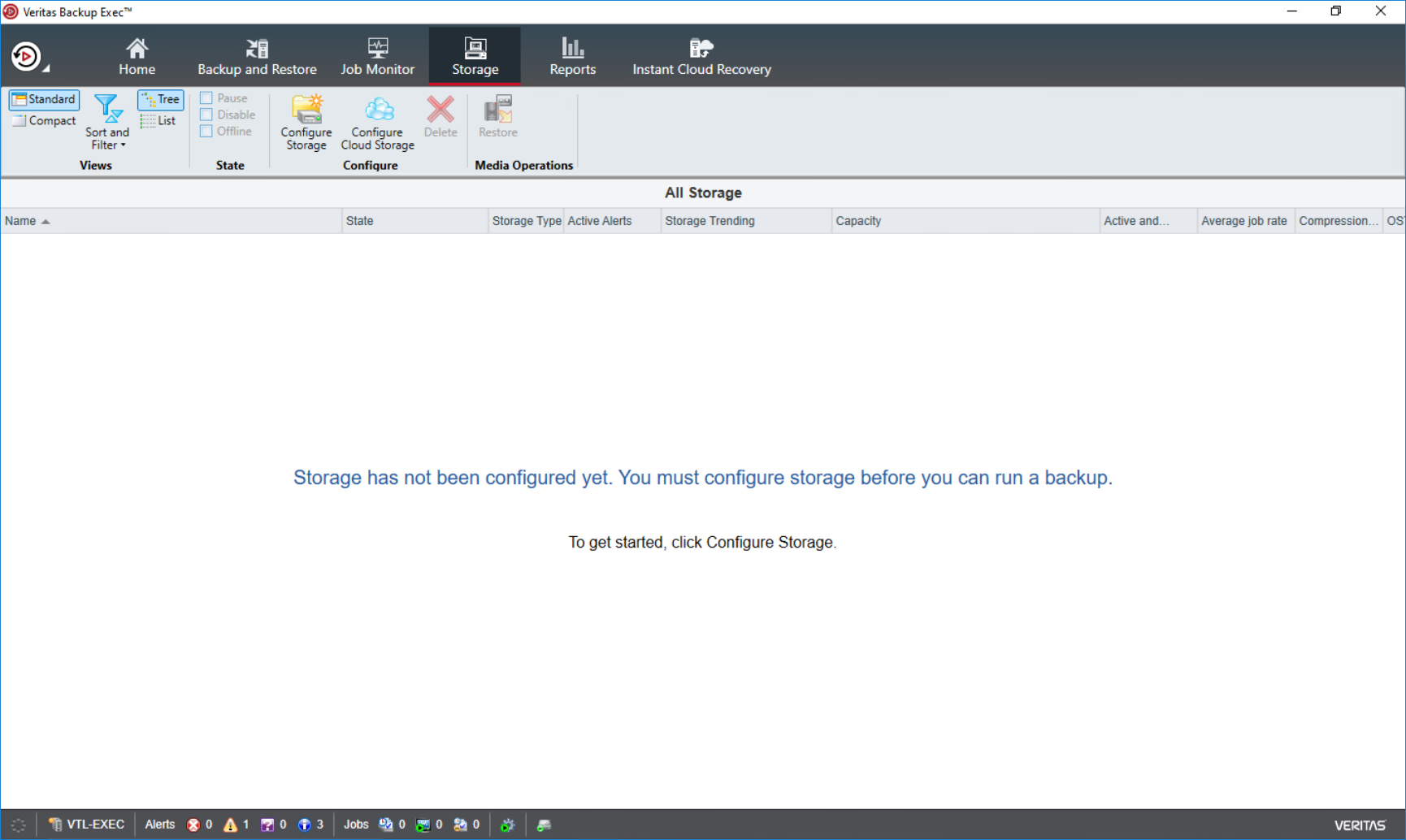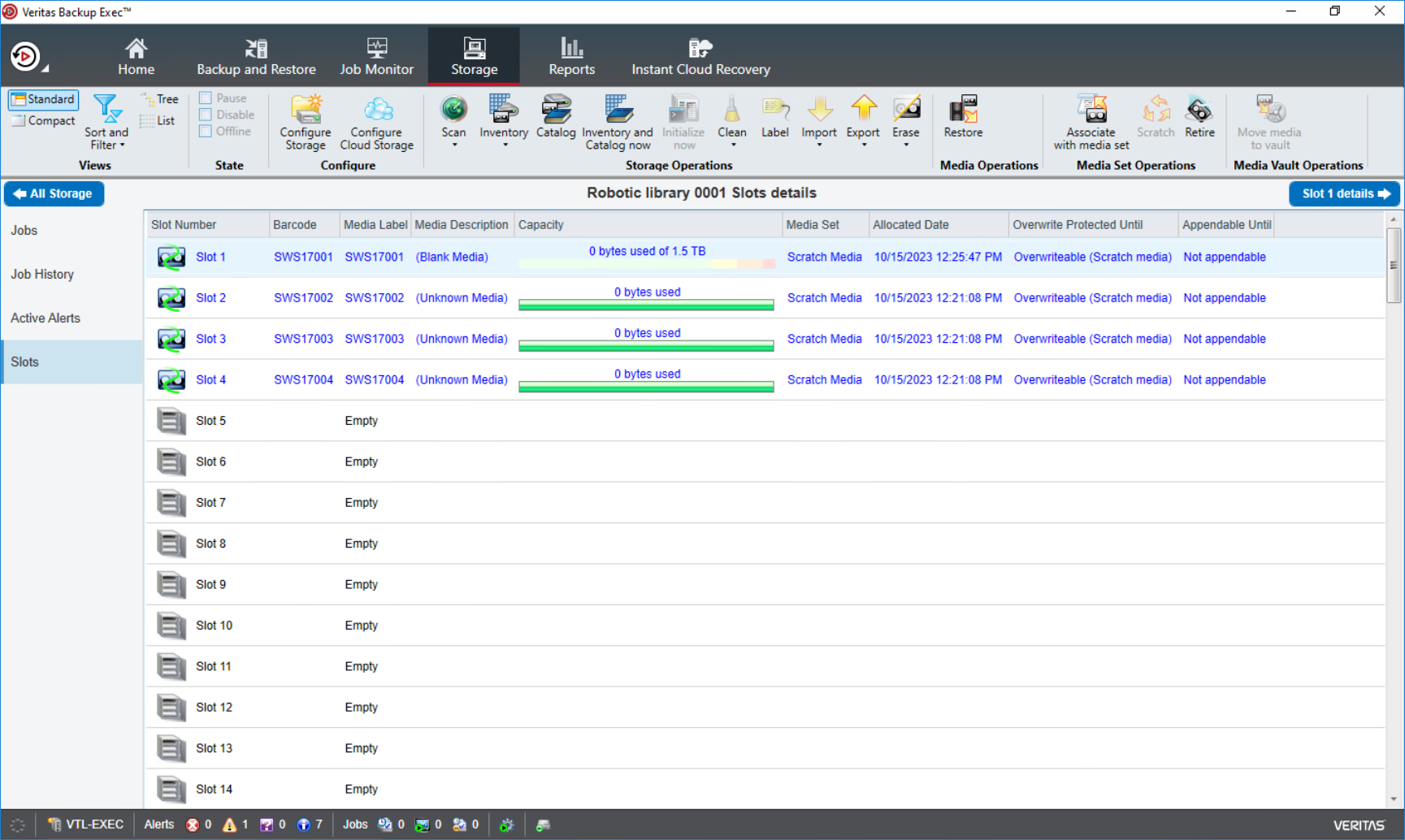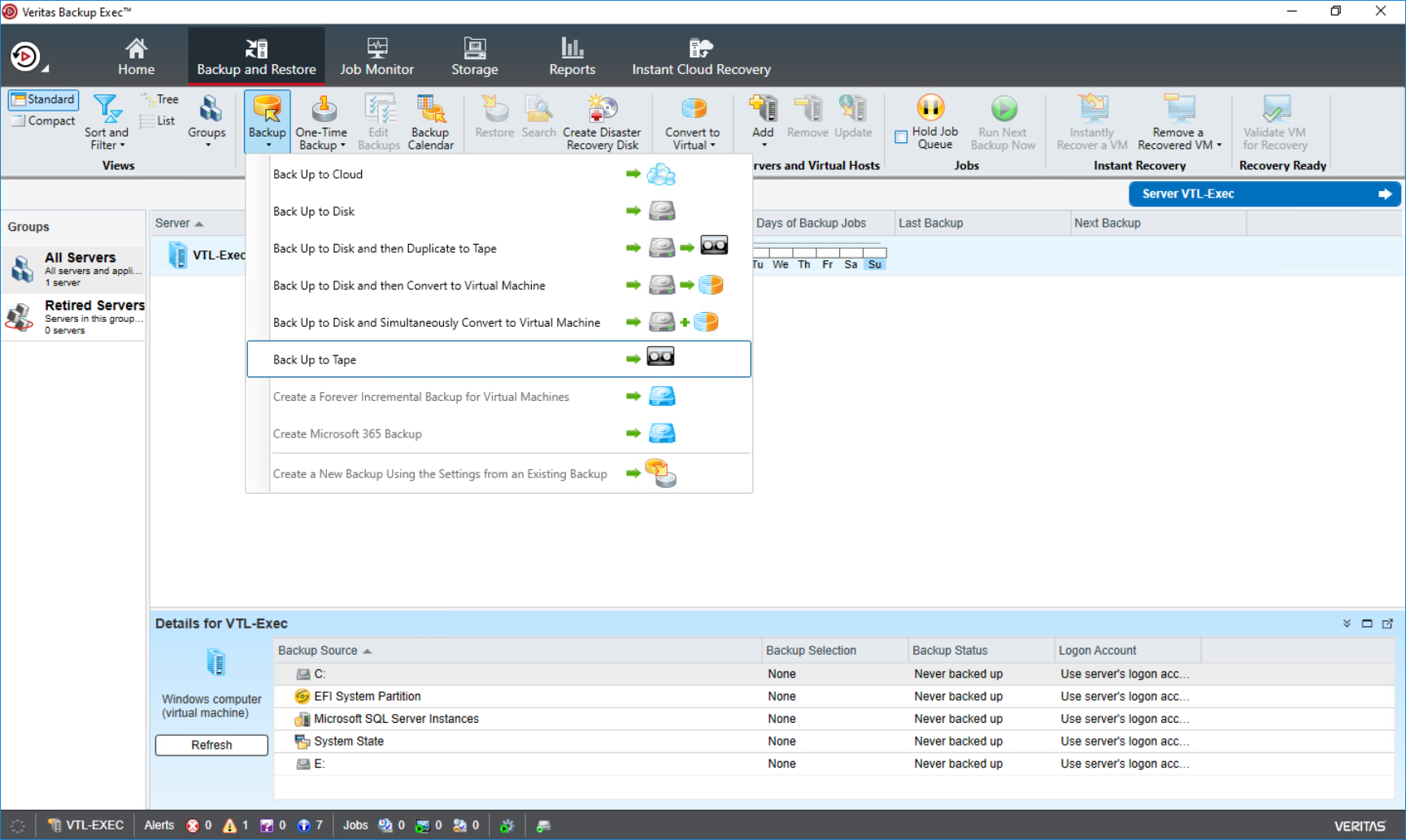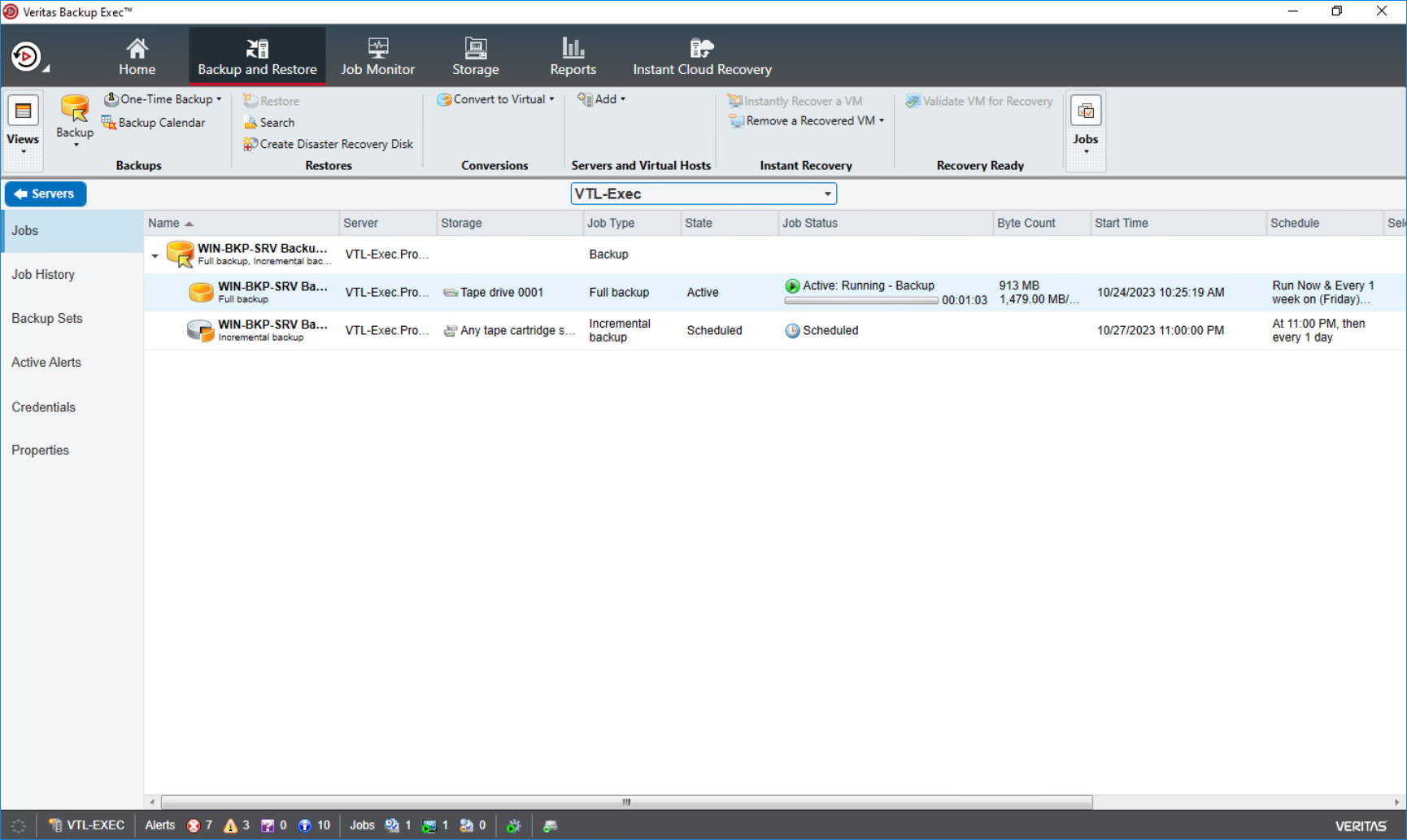StarWind Virtual Tape Library: Configuration Guide for Object Storage, VTL Deployed as a Windows Applications using GUI
- June 26, 2019
- 20 min read
- Download as PDF
Annotation
Relevant products
This guide is applicable for StarWind VTL (build version 12336 and later).
Purpose
StarWind Virtual Tape Library (VTL) is a software solution that allows you to emulate physical Tape Libraries while storing data on the hard disk drives. The solution targets companies that want to completely quit using the physical Tape Library, as well as simplify and accelerate the process of data backup and recovery.
This document outlines how to configure a StarWind VTL and includes steps on how to replicate the tapes to the local object storage.
Audience
This technical guide is intended for storage and virtualization architects, system administrators, and partners designing virtualized environments using StarWind Virtual Tape Library (VTL).
Expected result
The end result of following this guide will be a fully configured StarWind VTL with replicated tapes to the local object storage.
Prerequisites
StarWind VTL system requirements
Prior to installing StarWind Virtual SAN, please make sure that the system meets the requirements, which are available via the following link: https://www.starwindsoftware.com/system-requirements#virtual-tape-library
Recommended RAID settings for HDD and SSD disks:
https://knowledgebase.starwindsoftware.com/guidance/recommended-raid-settings-for-hdd-and-ssd-disks/
IMPORTANT NOTE: In order to fit the ransomware resiliency, the VTL should be located on the dedicated storage/host which must be isolated from the production environment. Please read the following document for details:
Backing up StarWind Virtual SAN Environment: Best Practice.
Installing StarWind VTL
1. Launch the downloaded setup file on the server where StarWind VTL has to be installed.
2. Read and accept the License Agreement.
3. Read carefully the information about new features and improvements.
Note: the text in red indicates warnings for users who are updating existing software installations.
4. Click Browse to modify the installation path if necessary.
5. To install StarWind VTL service along with StarWind Virtual SAN service, enable the checkboxes as in the image below.
6. Specify the Start Menu folder.
7. Enable the checkbox to create a desktop icon.
8. Select the appropriate option to enter the license key.
9. Review the licensing information and click Next to apply the license key.
10. Verify the installation settings and click Install to continue or Back to make any changes.
11. Enable the appropriate checkbox to launch the StarWind Management Console right after the setup wizard is closed.
12. Click Finish to close the wizard.
Configuring Virtual Tape Library
1. Launch the StarWind Management Console by double-clicking the StarWind tray icon.
NOTE: If StarWind service and Management Console are installed on the same server, the Management Console will automatically add the local StarWind instance to the Console tree after the first launch. Then, the Management Console automatically connects to it using the default credentials. To add remote StarWind servers to the Console, use the Add Server button on the control panel.
2. StarWind Management Console will ask to specify the default storage pool on the server you are connecting to for the first time. Please, configure the default storage pool to use one of the volumes you have prepared as StarWind storage earlier. All the devices created through the Add Device wizard will be stored on that storage pool by default.
3. Press the Yes button to configure the storage pool. Should you require to change the storage pool destination, press Choose path… and point the browser to the necessary disk.
4. Select the StarWind server where the device needs to be created.
5. Press the Add VTL Device button on the toolbar.
6. Specify the Virtual Tape Library location in the appeared window and click Next.
7. Select the Device Model from a drop-down list. You can also fill all slots in the newly created Tape Library with empty tapes.
8. Provide Target Alias or choose the default one.
9. Press the Create button to start the creation process.
10. Once the device creation is completed, click Close.
11. Once the VTL device is created, the tapes can be added. To do this, select the VTL device and click the Create Tape button located in the Tapes section.
12. The Create Tape wizard will appear. Optionally, select the checkbox and specify the custom path where the tape files must be stored.
13. Specify the Number of Tapes, Tape Type, and other parameters and click the Create button. It’s possible to customize the tape parameters.
14. The created tape appears in the first slot of the VTL device in the StarWind Management Console.
If required, create new tapes in the same way.
Configuring Object Storage Provider
To further proceed with configuring StarWind VTL Cloud Replication, please select the object storage provider of your choice:
Cloudian
Object storage has been developed as a data storing method with the hierarchy to be used. This method is usually used in cloud environments. Object storage does not implement any directory tree references. Separate data units, or objects, can be stored in the same storage pool at the same level. All objects in such pools are assigned their unique identifiers to be further used by applications when addressing such data objects. Additionally, each object has got metadata obtained when addressing it.
Configuring Cloudian Object Storage
1. Download and deploy Cloudian Object Storage by following the link: https://cloudian.com/products/hyperstore/
2. Login to Cloudian Object Storage after setup:
3. Click ADD NEW BUCKET to create a bucket on the Cloudian Object Storage:
4. Press CREATE NEW KEY to create the S3 access and secret key credentials on the Security Credentials page:
5. Save this information to apply to the StarWind Replication Target Access page:
- access Key ID [your access key ID]
- secret Access Key [your secret access key]
- bucket Name [your bucket name]
- service URL [https://your service url]
Configuring replication to Cloudian
1. To enable the replication between StarWind and object storage, navigate to StarWind Management Console > VTL device and click Cloud Replication.
2. Choose the required type of replication target and click Next.
3. In the Replication Settings, specify Access Key ID, Secret Access Key, Bucket Name, and Service URL obtained and configured previously and press the Next button.
4. Specify Tape File Retention Settings and click Apply. Optionally, select Create new empty tapes automatically… when the existing tape is exported for replication.
5. The automatic tape replication to the cloud storage is successfully configured according to the retention policy specified above.
IMPORTANT NOTE: Retention settings should be configured according to your corporate RTO and RPO requirements.
Mounting VTL on the Backup Host
To pass-through the VTL device to the Windows server with the backup software provider, the corresponding VTL iSCSI target should be mounted first.
1. Open Microsoft iSCSI Initiator, navigate to the Discovery tab, and press the Discover Portal button.
2. Enter the localhost address (127.0.0.1) and press the Advanced button.
3. Select Microsoft iSCSI Initiator from the Local Adapter drop-down list and press OK.
4. The newly added Discovery Portal will appear in the list.
5. Navigate to the Targets tab, find the iSCSI target which corresponds to the StarWind VTL device, and press the Connect button.
6. Leave the Enable Multipath checkbox empty and press the Advanced button.
7. Set Local adapter as Microsoft iSCSI Initiator, specify 127.0.0.1 / 3260 as Target portal IP and double-click the OK button to complete the target connection.
The VTL iSCSI target should be shown as Connected in the list.
Installing tape library drivers
It’s recommended to install the latest update driver from HP. The driver for HP MSL8096 can be downloaded here:
HPE StoreEver Tape Drivers for Microsoft Windows. The current version that supports Windows Server 2022 is 4.6.0.0. HP drivers must be installed on the host (localhost in this example) where StarWind VTL device is mounted via iSCSI.
1. Extract the downloaded driver and launch cpqsetup.exe.
2. Choose the Select All checkbox and click Install.
3. Once the drivers are installed, the Medium Changer devices is shown as Hewlett Packard MSL G3 Series library (x64 based).
The tape library is ready to be added to the server with the backup software provider.
Backing Up to StarWind Virtual Tapes
Choose the required backup software provider to add StarWind Virtual Tape Library to:
Microsoft System Center Data Protection Manager
Adding StarWind VTL Device to Microsoft SCDPM
In case of any question regarding Microsoft SCDP deployment, please refer the following link:
https://docs.microsoft.com/en-us/system-center/dpm/install-dpm?view=sc-dpm-1807
1. DPM automatically detects tape devices that are attached to it and they are displayed in the Libraries workspace of the Management view. If the tape isn’t displayed, it can be detected manually with the Rescan button.
2. After the rescan, check that the details displayed in Device Manager and in the tape library are the same.
3. To add more tapes, select the tape library in the Libraries workspace of the Management view, and then click Add.
4. The I/E port door named “Hewlett Packard MSL G3 Series library” will be opened, and more tapes can be created using StarWind management console as described in the previous steps.
NOTE: Do not press OK in case more tapes need to be created.
NOTE: While adding/removing tapes to the tape library using the Unlock library door or Add tape, DPM will automatically inventory the library.
While adding/removing tapes to the tape library without using Unlock library door or Add tape, the Inventory library action must be used to update the information in DPM Administrator Console.
5. Once the tapes are created using StarWind management console, press OK. DPM will detect the newly added tapes as shown in the screenshot.
6. Prior to using the newly added tapes, Identify the “Unknown” tapes so they become “Free” and ready to be used.
Configuring protection group for DPM
1. Open DPM Management Console in the Protection workspace of the Management view, and then click New+
2. Select the required backup option (Servers / Clients).
3. Choose the data that needs to be protected.
4. In Protection Group Wizard, select the required protection option:
• short-term protection (Disk / Tape)
• long-term protection (Tape)
5. In Protection Group Wizard, specify the short-term goals.
6. Specify the required Long-Term Goals.
7. Specify the required Library and Tape Details.
8. Review the Summary and click Create Group.
9. To create a manual recovery point, navigate to the Protection workspace of the Management view, right-click on the protected item and select Create recovery point… Select Short term tape protection or Long term tape protection.
10. Open the Libraries workspace of the Management view, the protection group named “Tape Protection Group 1” is assigned to slot 1.
Restoring data from tape
1. Make sure that the tape library is online and does not report any errors; this can be done by verifying the alerts in the Monitoring view of the DPM console or in the Libraries workspace of the Management view of the DPM console.
2. In the DPM console, go to Recovery and choose the data source to recover.
3. Mark the data source and choose the data and time for the restore. Right-click on the data source and choose Recover… to start the Recovery wizard.
4. In the Review Recovery Selection wizard, review the data source that is chosen for recovery and click on Next to continue.
5. In the Select Recovery Type wizard, choose one of the recovery options:
6. To recover data as a virtual machine, select Recover as virtual machine to any host option.
7. In the Specify Destination wizard, select the location to recover the virtual machine to.
8. In the Specify Recovery Options wizard, configure specific options for the recovery.
NOTE: Make sure to choose the library that hosts all the tapes that are needed for the recovery.
9. In the Summary step, verify the recovery settings, and click Recover to start the process of recovering the virtual machine to a different host.
NOTE: DPM uses a scratch before it sends the data to the selected data source. It is very important that the DPM %systemdrive% server has more than 10 GB of free disk space.
DPM supports item-level recovery (ILR), which allows performing a specific recovery of files, folders, volumes, and virtual hard disks from a host-level backup of Hyper-V virtual machines to a network share or a volume on a DPM protected server. However, ILR is not supported when restoring from tapes. Only an entire VM or a single virtual hard disk can be restored.
10. To restore files from the cloud storage, please navigate to the Restoring tapes from the cloud storage section.
Veeam Backup & Replication
In case of any question regarding Veeam Backup & Replication deployment, please refer the following link:
https://www.veeam.com/documentation-guides-datasheets.html?ad=menu-resources
Adding StarWind VTL to the Veeam Inventory
1. Open Veeam Backup & Replication. Open the Tape Infrastructure tab.
2. Open the Add Tape Server wizard. Choose the local server and press Next.
3. Complete the wizard, select Start tape library inventory when I click Finish and press the Finish button.
4. After Tape Inventory job is finished, the newly added tape library device will appear.
5. To erase Inventory and Catalog tapes, click Media and right-click the required tape.
Configuring back up to Tape Job in Veeam
1. Before using the new tape, erase it. The tape will be loaded into Drive.
2. Click Tape Job on the Home tab and select Files to run the File to Tape job wizard.
3. Specify the job Name and Description.
4. Specify the files and folders to be backed up.
5. In Full Backup, choose the existing media pool or create a new one by clicking the Add New… button. Set the schedule if necessary.
6. Add tapes to the media pool and click OK. Then click Next.
7. Enter Media set name. Specify the automatic creation settings if necessary.
8. Specify the tape Retention settings.
9. Check the summary and click Finish.
10. Select Media pool for full backup and set the schedule if necessary. Click Next.
11. Choose the media pool or add a new one for incremental backup. Optionally, set the schedule.
12. Set backup Options and click Apply.
13. Check the summary. For immediate job execution, select Run the job when I click Finish and click Finish.
14. The job status and progress can be checked in the History tab.
Restoring data from tape
1. Click the Restore file from tape.
2. Specify files and folders to restore and click Next.
3. Specify the Destination folder and click Next.
4. Select Automatic conflict resolution options and click Next.
5. Check Summary and click Finish.
6. The restoration progress will appear in the pop-up window or can be checked in the History tab.
Veritas Backup Exec™
Adding StarWind VTL Device to Veritas Backup Exeс™
In case of any question regarding Veritas Backup Exec™ deployment, please refer the following link:
https://www.veritas.com/content/support/en_US/doc/59226269-99535599-0/v59899992-99535599
1. In Veritas Backup Exec™ console, click the Storage tab and Configure Storage.
2. In the opened window, select Tape storage and click Next.
3. Select Run the Hot-swappable Device Wizard and click Next.
4. Follow the steps suggested by Hot-Swappable Device Wizard and to complete it.
NOTE: If the tape device has not appeared in the Storage tab, initiate the restart.
5. Double-click Slots to scan, erase, inventory and catalog the tapes.
6. Choose the tape and perform the necessary operations.
7. Confirm the data erasure when requested.
8. The prepared tape should look like in the screenshot below.
Configuring Backup to Tape job in Veritas Backup Exec™
In this part, the backup/restore process of the folder is shown as an example.
1. In the Backups group, click on the Backup and Restore tab. Click Backup and select Back Up to Tape.
2. Configure the Backup settings and click OK.
3. Once the job is configured, click the appropriate button to start it.
4. When the backup process starts, the progress is shown in the Status section. Double-click on the server to see the details.
5. To check the amount of the occupied storage space, navigate to the Capacity section.
Restore data from Veritas Backup Exec™
1. To restore data, click Restore in the Backup and Restore tab.
2. Select the type of data to restore.
3. Select the appropriate restore option.
4. Select files and folders to restore.
5. In the Browse for Folder window, specify the destination folder for the restored data and click OK. Then click Next.
6. Confirm the restore location and click Next.
7. Select the settings for file integrity, hierarchy, and security for the restored data.
8. Select options for restoring operating system features.
9. Specify additional tasks to perform before and/or after a restore.
10. Specify the restore job Name, Storage, and Schedule.
11. Double-check the summary and complete the restore job by clicking Finish.
12. To check the job progress, navigate to the Backup and Restore tab.
13. To see the restoring details, double-click on the server.
14. The restored files can be found in the specified folder.
To restore files from the cloud storage, please navigate to Restoring tapes from the cloud storage section.
Conclusion
By following the steps outlined in this document, you can expect to have a fully configured StarWind VTL that effectively emulates physical tape libraries, with the added capability of replicating tapes to local object storage.
For additional questions, support, or further information regarding the product and its setup, please feel free to reach out to the StarWind support team at support@starwind.com




